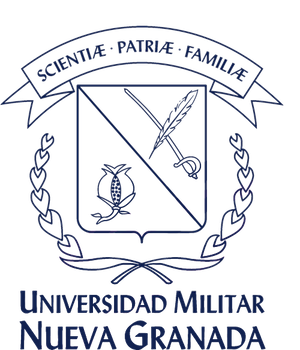Eficiencia de un reactor biológico secuencial en el tratamiento de efluentes de una planta procesadora de productos cárnicos
Abstract
The wastewater from a meat processing plant consists basically of organic matter and high nitrogen and phosphorus contents. This research had as objective to evaluate the efficiency of a sequential biological reactor in the removal of organic matter and nutrients, treating effluents of a meat processing plant located in Zulia state, Venezuela. The reactor was operated with three operational cycle times (7, 10 and 12 h), a cell retention time of 25 days and an anaerobic-aerobic-anoxic sequence (An/Ae/Ax). The parameters measured at the beginning, during and end of each cycle were: chemical oxygen demand, biochemical oxygen demand, total nitrogen, ammoniacal nitrogen, nitrites, nitrates, pH, total alkalinity, total phosphorus, color and turbidity. The treatments applied to this effluent in the sequential batch reactor (SBR) allowed the removal of organic matter and nutrients higher than 92.6% for DQOT, 44.7% for NT and 52.6% for PT, due to the flexibility of the reactor for adapt to different operating conditions. The greatest removal of organic matter, nutrients, color and turbidity was achieved with operational cycle times (TCO) of 10 and 12 h, generating an effluent that complied with what is established in the Venezuelan regulations for discharge into bodies of water.
Downloads
References
• American Public Health Association (APHA), American Water Works Association (AWWA), Water Environment Federation (WEF). 2005. Standard methods for the examination of water and wastewater, 21th Edition, American Public Health Association 1015 Fifteenth street, N.W. Washington, D.C. USA.
• Ángulo N, Carvajal K, Cárdenas C, Araujo I, Morillo G, Melo P, Beltrán, A, Díaz, A. 2015. Comparación de condiciones operacionales en un reactor por carga secuencial tratando un efluente lácteo. Revista Técnica de la Facultad de Ingeniería Universidad del Zulia, 38(1):50-57.
• Baskar M, Sukumunan B. 2015. Effective method of treating wastewater from meat processing industry using sequencing batch reactor. International Research Journal of Engineering and Technology, 1(2):1-5.
• Barbut S. 2015. Waste treatments and by-products. En: The Science of poultry and meat processing. Universidad de Guelph. Ontario, Canadá. 1-31 p.
• Carrasquero S, Marquina D, Soto J, Viloria S, Pire M, Díaz A. 2015. Remoción de nutrientes en aguas residuales de un matadero de reses usando un reactor biológico secuencial. Ciencia e Ingeniería Neogranadina, 25(2):43-60.
• Carrasquero S, Pire, M, Rincón, N, Díaz, A. 2014a. Monitoreo de la remoción biológica de nitrógeno en efluentes de tenerías usando un reactor por carga secuencial. Ingeniería, Investigación y Tecnología, 15(2):287-298.
• Carrasquero, S, Pire M, Colina, G, Mas y Rubí M, Martínez M, Díaz A. 2014b. Tasas de nitrificación y desnitrificación durante el tratamiento biológico de efluentes de tenerías en un reactor por carga secuencial. Boletín del Centro de Investigaciones Biológicas, 47(3):220-234.
• Carrasquero S, Matos E, Saras F, Pire M, Colina G, Díaz A. 2014c. Evaluación de la eficiencia de un reactor por carga secuencial tratando aguas residuales provenientes de un matadero de reses. Revista de la Facultad de Ingeniería Universidad Central de Venezuela, 29(3):7-16.
• Corbitt R. 2003. Manual de referencia de la ingeniería medioambiental. Editorial McGraw Hill. España. 1608 pp.
• Decreto 883 1995. Normas para la clasificación y el control de la calidad de los cuerpos de agua y de los vertidos líquidos. Decreto 883. Gaceta No. 5021. 18-12-1995. Venezuela.
• De Sena R, Tambosi J, Genena A, Moreira R, Schroder H, José H. 2004. Treatment of meat industry wastewater using dissolved air flotation andadvanced oxidation processes monitored by GC–MS and LC–MS. Chemical Engineering Journal, 152:151–157.
• Díaz A, Ferrer P, Mazzolo E, Ferrer M, Rincón N, Colina G. 2010. Remoción simultánea de nitrógeno, DQO y fenol en un efluente sintético utilizando reactores SBR. Revista Técnica de la Facultad de Ingeniería Universidad del Zulia, 33(3):205-212.
• Díaz A, Villalobos M, Escalera M, Carrasquero S, Lopez F. 2012. Remoción de nitrógeno en efluentes de una industria camaronera utilizando un reactor por carga secuencial. Ciencia, 20(2):79-89.
• Durai G, Rajasimman M. 2011. Biological treatment of tannery wastewater – A review. Environmental Science & Technology, 4(1):1-17.
• EPA (1999). Wastewater technology fact sheet sequencing batch reactors. EPA 832-F-99-073 U.S. Environmental Protection Agency. Washington D.C. Estados Unidos.
• Escaler I, Mujeriego R. (2001). Eliminación biológica de nutrientes (nitrógeno y fósforo) mediante un proceso discontinuo de lodos activados. Ingeniería del agua, 8(1):67-77.
• Farabegoli G, Caruccí A, Majone M, Rolle E. 2004. Biological treatment of tannery wastewater in the presence of chromium. Journal of Environmental Management, 71:345–349.
• Filali Y, Auriol M, Tyagi R, Surampalli R. 2004. Treatment of slaughterhouse wastewater in a sequencing batch reactor: simulation vs experimental studies. Journal of Environmental Management, 25(1):23-38.
• Flapper T, Ashbolt N, Lee A, Lee A, Neil O. 2001. From the laboratory to full-scale SBR operation: treating high strength and variable industrial wastewaters. Water Science and Technology, 43(3):347-365.
• Grunditz C, Dalhammar G. 2001. Development of nitrification inhibition assays using pure cultures of Nitrosomonas and Nitrobacter. Water Research, 35:433–440
• Kundu P, Debsarkar A, Mukherjee S. 2013. Treatment of slaughter house wastewater in a sequencing batch reactor: Performance evaluation and biodegradation kinetics. BioMed Research International, 1:1-11.
• Kundu P, Debsarkar, A, Mukherjee, S. 2014. Kinetic modeling for simultaneous organic carbon oxidation, nitrification, and denitrification of abattoir wastewater in sequencing batch reactor. Bioremediation Journal, 18 (4), 267-286.
• Ledesma C, Bononsea M, Rodríguez C, Sánchez, A. 2013. Determinación de indicadores de eutrofización en el embalse Río Tercero, Córdoba (Argentina). Revista Ciencia Agronómica, 44(3):419-425.
• León E, García J, Del Real J, López A. 2016. Performance of an upflow anaerobic filter in the treatment of cold meat industry wastewater. Process Safety Environment Protection, 102:385-91.
• Ley de aguas. 2007. Gaceta Oficial de la República Bolivariana de Venezuela No. 35.595. 02-01-2007. Venezuela.
• Li B, Irvin S. 2007. The comparison of alkalinity and ORP as indicators for nitrification and denitrification in a sequencing batch reactor (SBR). Biochemical Engineering Journal, 34:248–255
• Li J, Healy M, Zhan X, Rodgers M. 2008. Nutrient removal from slaughterhouse wastewater in an intermittenly aerated sequencing batch reactor. Bioresource Technology, 99(16):7644-7650.
• López A, De la Barrera J, Vallejo R, Barahona C. 2008. Estudio comparativo entre un proceso fisicoquímico y uno biológico para tratar agua residual de rastro. Interciencia, 33(7):490-495.
• López A, Vallejo R, Méndez D. 2010. Evaluation of a combined anaerobic and aerobic system for the treatment of slaughterhouse wastewater. Environmental Technology, 31(3):319–326.
• Maldonado, J, Ramón, J. 2006. Sistema de tratamiento para aguas residuales industriales en mataderos. Revista Ambiental Agua, Aire y Suelo, 1:34-49
• Massé D, Masse L. 2000. Characterization of wastewater from hog slaughterhouses in Eastern Canada and evaluation of their in-plant wastewater treatment systems. Canadian Agricultural Engineering, 42 (3):139-146.
• Mekonnen A, Leta S. 2011. Effects of cycle and fill period length on the performance of a single sequencing batch reactor in the treatment of composite tannery wastewater. Natura and Science, 9(10):1-8.
• Moreno D, Quintero J, López A. 2010. Métodos para identificar, diagnosticar y evaluar el grado de eutrofia. ContactoS, 78:25.33.
• Padilla E., López, A. y Gallardo, J. 2011. Evaluation of stability factors in the anaerobic treatment of slaughterhouse water. International Biodeterioration and Biodegradation, 2:114.
• Palmero J, Pire M, Hernández J, López F, Rincón N, Díaz A. 2009. Fraccionamiento de la materia orgánica de un agua residual de la industria avícola para la remoción biológica de nutrientes. Boletín del Centro de Investigaciones Biológicas, 43(2): 211–224.
• Pire M, Cegarra D, Carrasquero S, Angulo N, Díaz A. 2015. Nitrogen and COD removal from tannery wastewater using biological and physicochemical treatments. Revista Facultad de Ingeniería de la Universidad de Antioquia, 80, 63-73.
• Romero J. 2001. Tratamiento de aguas residuales. Teoría y principios de diseño. Editorial Escuela Colombiana de Ingeniería. Bogotá, Colombia. 1232 p.
• Romero T, Garbayo P, González O. 2014. Caracterización de las aguas residuales de la empresa procesadora de alimentos PRODAL, Cuba. Ingeniería Hidráulica y Ambiental, 35(3):88-100.
• Sroka E, Kamfliski W, Bohdziewicz J. 2004. Biological treatment of meat industry wastewater. Desalination, 162:85-91.
• Uygur A. 2006. Specific nutrient removal rates in saline wastewater treatment using sequencing batch reactor. Process Biochemistry, 41:61-66.
• USDA. 2012. Jamón y la inocuidad alimentaria. Servicio de Inocuidad e Inspección de los Alimentos. Departamento de Agricultura de los Estados Unidos. Dirección: https://www.fsis.usda.gov/wps/wcm/connect/0bbf041a-8134-46bd-a97d-c4a630ec167d/Jamon_y_la_Inocuidad_Alimentaria.pdf?MOD=AJPERES.Consulta: abril de 2017.
• Wahaab R, El-Awady, H. 1999. Anaerobic/aerobic treatment of meat processing wastewater. The Environmentalist, 19:61-65.
• Youwei C, Shuying W, Jing L. 2009. On-line monitoring for phosphorus removal process and bacterial community in sequencing batch reactor. Chinese Journal of Chemical Engineering, 17(3) 484-492.
• Zhan X, Healy M, Li J. 2009. Nitrogen removal from slaughterhouse wastewater in a sequencing batch reactor under controlled low DO conditions. Bioprocess and Biosystems Engineering, 32(5), 607-614












